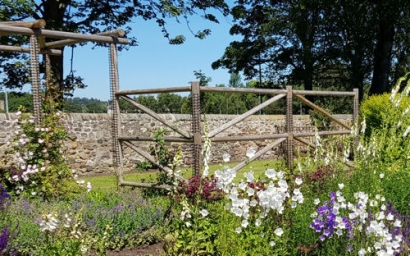
Scotland is facing a major challenge to decouple its dependence on carbon-rich fossil fuels to heat its homes and businesses. For decades it has relied largely on a centralized mains gas grid to meet the needs of approximately 80% of its households. As a consequence, the supply of heat has become the single biggest culprit for carbon emissions across the country. Scotland is poised to miss its 2020 government target for supplying 11% of heat demand from low carbon sources; with estimates suggesting it is stuck nearer 6% making future targets even more challenging.
John Maslen, greenspace scotland’s ParkPower program manager, said, “To have any chance of achieving our world-leading decarbonization ambitions Scotland needs to surge up the low carbon heat league table of European nations to escape its current position in the relegation zone. Climate scientists and the Scottish Government appear to be on the same page - heat needs a radical overhaul. The big unanswered question is 'how?' We believe that generating heat from urban greenspace using heat pumps and supplying this to buildings through a network of pipes has a key part to play in any solution.”
The use of heat pumps to take heat from the ground, from water sources or from the air is a well-worn ‘pathway’ in countries like Sweden and Austria where installations are widespread. One key challenge facing both heat pumps and other heat projects that, to a large extent, differentiates them from electricity projects, is the cost of transport; it is expensive to transport heat over long distances.
The viabilityof heat schemes is optimized by generating heat in close proximity to where it is needed. Heat demand is, of course, highest within our urban centers. Unfortunately, space in these locations is at a premium. While fossil fuel based heating solutions have tended to require minimal space, their green counterparts are generally more space hungry.
The new research project launched this week aims to address this issue head-on. Green Heat in Greenspaces will explore how areas of greenspace across Scotland can contribute to transforming the urban landscape of the future to one based on low carbon heat. This is the first time Ordnance Survey’s most detailed mapping of urban greenspaces has been used to assess the heat potential of specific sites. Already this data has highlighted the true scale of the opportunity: far from being dominated by grey space, analysis shows our cities to be largely green, with coverage at over 60% in cities like Aberdeen and Edinburgh.
The project is led by greenspace scotland as part of its ongoing ParkPower program and will be supported by low carbon energy specialists Ramboll.
Paul Steen, head of the energy team at Ramboll, comments,“Our work on the ParkPower program to date clearly demonstrates that urban greenspace can play a critical enabling role in the generation and transmission of low carbon heat. The GHiGs project will allow us to explore its full potential Scotland-wide, short-list candidate sites and feed evidence into wider strategic energy planning.”
GHiGs has secured support from a wide range of partners across the public and third sectors including half of Scotland’s 32 local authorities, Improvement Service, Scottish Environment Protection Agency, Scottish Enterprise, NHS Scotland, Scottish Land Commission, Architecture & Design Scotland, Historic Environment Scotland, sportscotland, Strathclyde University and Zero Waste Scotland. Organizations like the British Geological Survey and Ordnance Survey are also contributing specialist expertise.
The outputs from the project, due in early 2021, will enable assessment of the scale of opportunity across Scotland and provide greenspace owners with data to identify the most promising sites to progress. With the Scottish Government expecting the public sector to lead the way in terms of decarbonising its building assets, most organizations are looking at ways to make significant cuts to the carbon emissions of their buildings. The project will also feed into strategic work, supported by the Scottish Government, to aid local authorities in the production of a consistent set of nationwide plans to guide investment into low carbon heat and energy efficiency and help bring vacant and derelict land back into use.

